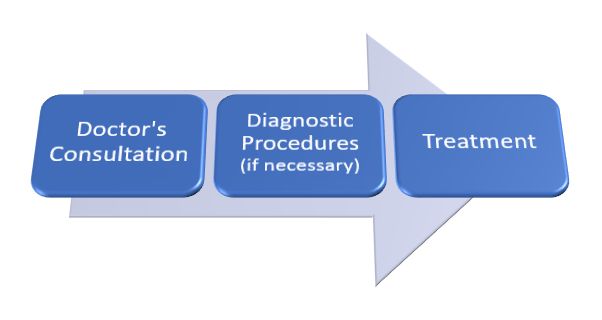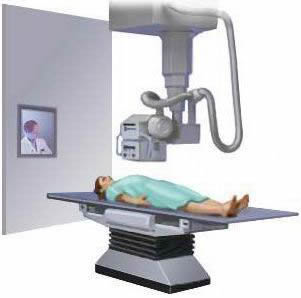The doctor's consultation
The Importance of a Doctor's Consultation
When to Seek Medical Advice
When an individual feels unwell, sustains an injury, or experiences symptoms of sickness, the crucial first step is to seek professional medical advice. A consultation with a qualified specialist is paramount for accurate diagnosis, appropriate treatment, and the prevention of potential complications. Delaying medical attention can sometimes lead to worsening conditions or missed opportunities for early intervention.
Areas of Specialization for Consultation
At the "Clinics of Minimally Invasive Neurosurgery," we provide expert consultations and advice for patients experiencing a wide spectrum of diseases and conditions, including those affecting the:
- Brain and Central Nervous System
- Cerebrovascular system (blood vessels of the brain and spine)
- Spinal cord and vertebral column (spine)
- Peripheral nerves
- Musculoskeletal system (bones, joints, muscles, ligaments, tendons)
- Soft tissues
- Urogenital system
- Mental and emotional health
- Teeth and periodontium (often related to facial pain or referred symptoms)
- Ear, nose, and throat (ENT) conditions
The Consultation Process: What to Expect
The initial consultation with a doctor is one of the most critical stages in the diagnostic and treatment journey. It lays the foundation for understanding the patient's condition and formulating an effective care plan.
Initial Examination and Medical History
The process of compiling a comprehensive medical history begins with the doctor's thorough examination of the patient. During this interaction, the patient communicates their concerns, discusses their current condition, describes the signs and symptoms of their illness, and provides details about the specifics and features of its onset and progression. The doctor meticulously reviews these complaints and comments, recording all necessary data into the patient's medical record.
At the first visit, the doctor will typically gather:
- Presenting Complaints: Detailed description of current symptoms.
- History of Present Illness: Onset, duration, progression, severity, and any factors that alleviate or exacerbate symptoms.
- Past Medical History: Information about previous illnesses, surgeries, hospitalizations, and chronic conditions.
- Medication History: A list of all current medications, including prescription drugs, over-the-counter medicines, and supplements.
- Allergies: Known allergies to medications, food, or environmental factors.
- Family History: Information about medical conditions present in family members.
- Social History: Lifestyle factors such as diet, exercise, smoking, alcohol use, and occupation.
- Review of Previous Treatments and Diagnostics: If applicable, information on prior treatments and results of previous diagnostic procedures.
Diagnostic Planning
Based on the information gathered from the history and initial physical examination, the doctor will formulate a preliminary diagnostic impression. If further clarification is needed to confirm the diagnosis or to understand the extent of the condition, the doctor may recommend additional diagnostic tests and procedures. This diagnostic plan is crucial for identifying the true cause and form of the disease.
Developing a Treatment Plan
Once a diagnosis is established or refined, a tailored treatment plan will be drawn up. This plan will outline the recommended course of action, which could include medical management, surgical intervention, rehabilitation, or a combination of approaches. A comprehensive consultation before initiating any medical manipulations is essential to determine the most effective, and safest treatment strategy for the patient, aiming for a good subsequent clinical result.
Specialized Consultations: Neurologist and Neurosurgeon
Patients with conditions affecting the nervous system often require consultation with a neurologist (specializing in medical management) or a neurosurgeon (specializing in surgical management).
Neurological Examination
A key component of these consultations is a detailed neurological examination, which assesses various aspects of nervous system function, including mental status, cranial nerves, motor system, sensory system, reflexes, coordination, and gait. The physical examination findings are correlated with the patient's medical history to arrive at a preliminary diagnosis.
Common Neurological and Neurosurgical Conditions
The modern lifestyle, characterized by prolonged sitting (e.g., in a car or at a computer), has contributed to the prevalence of conditions like herniated or protruding intervertebral discs, which can cause nerve root compression. Patients often experience severe pain, numbness, or shock-like sensations radiating into a leg or arm, depending on the level of disc damage. During a consultation, a neurologist or neurosurgeon will perform a neurological examination and may provide initial first aid to alleviate severe radicular pain (e.g., through nerve blocks or manual correction techniques to relax nerve tension).
Other conditions requiring specialized consultation include:
- Compression fractures of the spine: Diagnosis begins with neurological and orthopedic examination, potentially followed by further diagnostic and therapeutic procedures.
- Traumatic Brain Injury (TBI): The incidence of TBI has significantly increased, often due to vehicle accidents. Neurosurgeons and neurologists (neuropathologists) consult and treat patients with various forms of TBI, including concussions and brain contusions. Severe contusions with intracranial hemorrhage can cause significant pressure on brain structures, requiring urgent neurosurgical intervention.
- Cerebrovascular Diseases: Conditions affecting the blood vessels of the brain and spinal cord can be life-threatening. Rupture of a cerebral artery aneurysm or hemorrhage due to severe hypertension (hypertensive crisis) necessitates urgent hospitalization and neurosurgical consultation to develop a treatment plan.
- Peripheral Nerve Injuries and Compression Neuritis: May require surgical intervention. Consultation with a neurosurgeon or neurologist, along with instrumental diagnostics (e.g., electroneuromyography - ENG/EMG, MRI), helps localize the level and degree of nerve damage, aiding in planning operative access or prescribing conservative treatment if surgery is not required.
Interpreting Diagnostic Imaging (MRI/CT)
If a patient has already undergone imaging studies such as MRI or CT scans (of the brain, cerebral vessels, spine, etc.) independently, the results can be analyzed during a consultation with our neurosurgeon or neurologist. Consultations regarding MRI and CT tomography findings, along with necessary further medical prescriptions and recommendations, can be obtained at our outpatient clinic, during a hospital stay, or even via remote consultation/home visit where appropriate.
The diagnosis of patients often involves examinations in a Department of Radiation Diagnostics, equipped with modern MRI and CT machines. Subsequent consultation with a neurosurgeon or neurologist on these findings allows for the determination of an accurate clinical diagnosis and the formulation of an optimal treatment strategy.
Key Components of a Medical Consultation (Comparative Table)
| Component | Description | Patient's Role | Doctor's Role |
|---|---|---|---|
| Medical History Taking (Anamnesis) | Gathering information about current symptoms, past illnesses, family history, medications, allergies, lifestyle. | Provide complete and accurate information. Prepare a list of symptoms, medications, and questions beforehand. | Ask targeted questions, listen actively, document thoroughly. |
| Physical Examination | Objective assessment of the patient's physical state relevant to their complaints (e.g., neurological exam, orthopedic exam, general physical). | Cooperate with the examination. Inform doctor of any discomfort during the exam. | Perform systematic examination, observe signs, record findings. |
| Review of Previous Records/Tests | Analysis of prior medical reports, imaging studies (MRI, CT, X-ray), lab results. | Bring all relevant previous medical records and test results. | Interpret previous findings in the context of current presentation. |
| Preliminary Diagnosis / Differential Diagnosis | Formulating a working diagnosis or a list of possible conditions based on available information. | Understand the potential diagnoses and ask clarifying questions. | Explain the reasoning behind the preliminary diagnosis and any uncertainties. |
| Diagnostic Plan | Recommending further tests (if needed) to confirm diagnosis or rule out other conditions. | Understand the purpose, risks, and benefits of recommended tests. Consent to tests. | Explain the rationale for further tests, discuss alternatives, obtain informed consent. |
| Treatment Plan Discussion | Proposing treatment options, discussing benefits, risks, alternatives, and expected outcomes. | Actively participate in decision-making, express preferences, ask about side effects and recovery. | Provide evidence-based recommendations, tailor plan to individual patient, address concerns. |
| Patient Education and Counseling | Providing information about the condition, self-care measures, lifestyle modifications, and follow-up. | Ask for clarification on any instructions. Take notes if helpful. | Ensure patient understands their condition and treatment plan. Provide clear instructions. |
Accessibility and Patient-Centered Care
For your convenience and to ensure comprehensive care, our doctors are available to serve and advise patients through various channels:
- In-Clinic Consultations: At our outpatient facilities.
- Home Visits: For eligible patients or specific circumstances where mobility is a concern.
- Hospital Consultations: Providing expert advice for inpatients at other medical institutions upon request or referral.
- Outpatient Diagnostic Center Consultations: Collaborating with other diagnostic centers.
- Workplace/Educational Setting Consultations: For specific occupational health assessments or specialized advisory roles where applicable.
We encourage you to contact the "Clinics of Minimally Invasive Neurosurgery" to experience a caring and respectful environment coupled with professional, high-quality medical care designed around your individual needs.
References
- Bickley LS, Szilagyi PG, Hoffman RM. Bates' Guide to Physical Examination and History Taking. 13th ed. Lippincott Williams & Wilkins; 2021.
- Rakel RE, Rakel DP. Textbook of Family Medicine. 9th ed. Elsevier Saunders; 2016. (Chapter on The Family Physician and The Medical Record).
- American Medical Association. AMA Code of Medical Ethics – Patient-Physician Relationships. (Refer to current AMA guidelines).
- Institute for Healthcare Improvement (IHI). Patient-Centered Care. Accessed [Current Date]. (General principles of patient-centered approaches).
- Silverman J, Kurtz S, Draper J. Skills for Communicating with Patients. 3rd ed. Radcliffe Publishing; 2013.
- Epstein RM, Street RL Jr. Patient-Centered Communication in Cancer Care: Promoting Healing and Reducing Suffering. National Cancer Institute; NIH Publication No. 07-6225; 2007.
- Greenhalgh T, Hurwitz B. Narrative based medicine: Dialogue and discourse in clinical practice. BMJ. 1999;318(7175):48-50.




